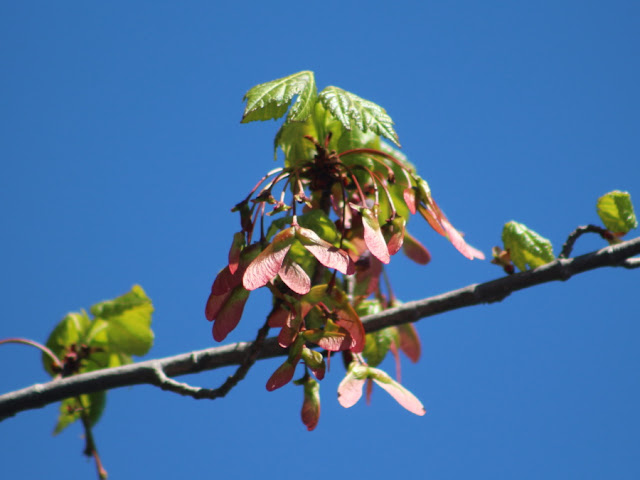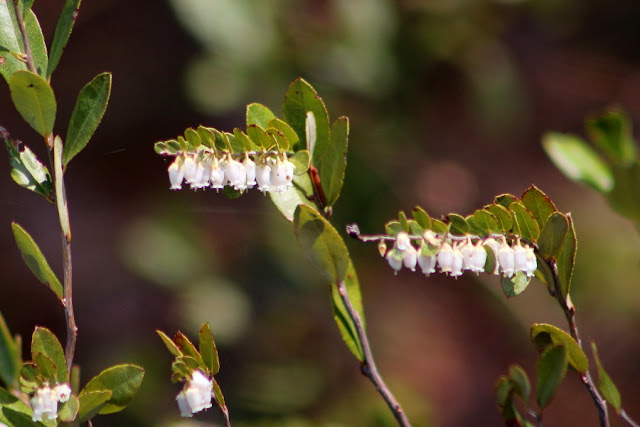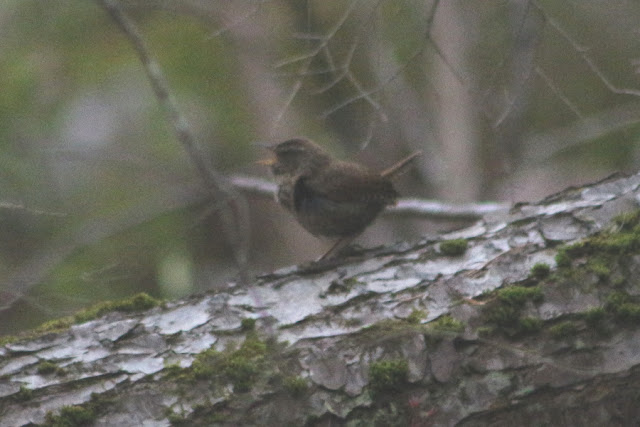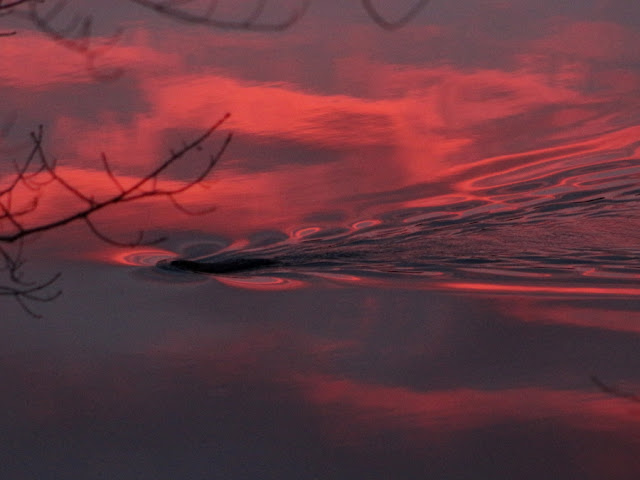But first this:
Yes, the song birds are now nesting. I found this small ground nest only because the inhabitant fluttered away as I walked past the nest which was located right beside the trail, perfectly hidden under a branch of a low-bush blueberry; I really had to look to find it. They look like Robin eggs, but I think more likely this is a nest of either a hermit thrush or a veery. I frequently hear the thrush in this vicinity so the odds suggest that's what it is. Maybe I'll learn more as time goes on.
I didn't see the goslings this week, but Mrs. Mallard did come by with her ten chicks in tow.
 |
| The waterfowl nest long before the songbirds. |
Before I get to the sounds of the week I really must mention the sights because the spring wildflower season is peaking now. My personal favorite, the painted trillium, has been blooming for over a week but can still be found throughout the Lakes Region.
 |
| Painted Trillium |
Just popping out this week is a flower everyone loves to see, the pink lady's slipper. The photo of this beautiful patch was sent to me by Marge Thorpe.
 |
| Pink Lady's Slipper, photo by Marge Thorpe. |
A smaller, more delicate flower now blooming isn't quite as prominent, but it's worth taking the effort to look at the fine detail in its delicate star-like bloom.
 |
| Easter Starflower |
The blossoms on the hobblebush are gone now - leaving behind tiny specks that will grow into fruit this summer - but here's one picture from their peak of beauty.
 |
| Hobblebush Viburnum |
I've been watching this particular plant as it evolves and will continue to watch as its fruit grows, turns red, and eventually black when fully ripe.
Having such a long stretch of warm weather this early in the year means sleeping with the windows open when so many animals are still at a high level of spring activity. Some of the sounds to be woken up by include turkeys gobbling, owls hooting, tree frogs trilling, large animals crashing through the woods (bears?) and of course, the beaver alert. I remember sitting in the Marion's cabin 35 years ago when were considering purchasing our land on Lake Wicwas and Mrs. Marion warned us that it was a very noisy neighborhood. Confused, we asked her what she meant, and she said "The birds! They wake you every morning!" That has always stuck with me, especially considering the Marions lived in downtown Boston!
A loud member of nature's orchestra, sitting in the percussion section, is the woodpecker. Though they do chirp now and then in the choir, their drumming is most distinctive and great fun to hear. One morning there were two yellow-bellied sapsuckers out drumming in a round. One would drum first, then the second would answer. I couldn't find the musicians, but I sure heard them.
This behavior is used to define their territory. I learned from UNH biologist Matt Tarr that spring bird singing is primarily to define territory - two male birds of the same species will wake up in the morning and immediately start singing to say "I'm still here". As long as each bird stays on its side of the agreed-to dividing line everything is fine. But cross that line, and trouble ensues. Since woodpeckers don't have a song to sing - only their short calls - they find a resonant object on which to drum to make their presence known, usually a dead tree or branch, and the louder and greater its resonance, the larger a territory the sound can cover.
Regarding sights under water, the crystal clear lake water is about to change.
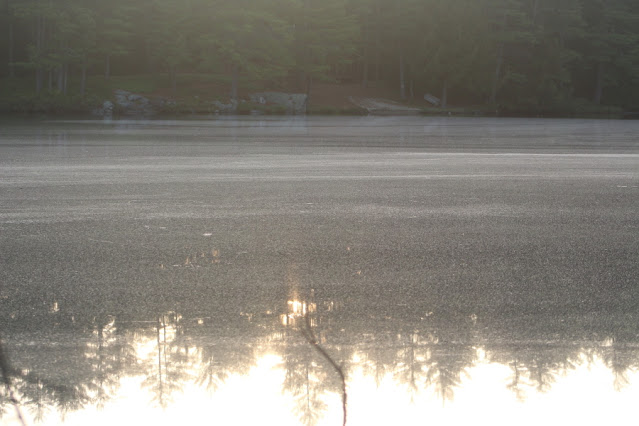 |
| Pollen covers the surface of Lake Wicwas |
All that pollen in the air has now found its way to the ground. Add to that the multitude of microscopic life that will start to grow in the lakes, as well as some churning up by animals and humans, and the visibility will be much reduced from its early spring clarity. But all the trees aren't quite done: the white pine is just starting to release its dose. Pines produce the thick green pollen that is so visible on surfaces, but thankfully, due to the large size of the pollen particles it isn't an allergy nuisance for most people.
With all the pollen out of the atmosphere there were some spectacular summer days on the lakes this week.
Now that's something to sing about!


